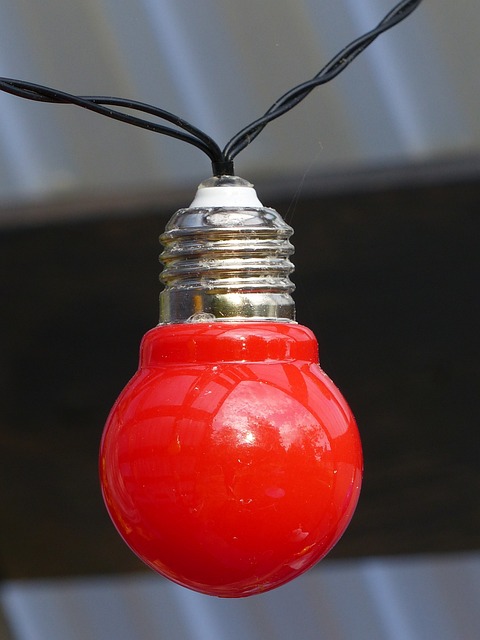When managing hearing aids, understanding the types of batteries used—mainly zinc-air in sizes 10, 312, 13, and 675—and their recommended replacement schedules is crucial. These batteries offer varying lifespans, from around 80-130 hours for size 10 to about 8-14 days for size 675, and regular replacements are necessary for optimal performance and clear sound quality. Users should monitor battery life, keep track of replacement dates, and adhere to a proactive maintenance schedule to prevent functionality issues. Replacing batteries is a routine task; follow manufacturer instructions precisely, and be mindful of proper handling to avoid moisture ingress. For disposable batteries, expect to replace them every few days to a week, while rechargeable options eliminate the need for frequent replacements by offering overnight charging capabilities. Consider your lifestyle, environmental impact, and personal preferences when choosing between disposable and rechargeable hearing aid batteries. Proper storage of batteries in cool, dry conditions can enhance their lifespan. Regular cleaning of the battery compartment and adhering to manufacturer guidelines for battery installation will ensure peak performance and prevent damage to your device. Timely battery replacements are key to maintaining uninterrupted hearing aid functionality and an improved overall experience. Remember to replace batteries promptly when sound quality diminishes or persistent beeping occurs, and always charge rechargeable models overnight for best results. Regular upkeep, including consistent battery checks and replacements, is essential for sustained enjoyment and effectiveness of your hearing aids.
When it comes to maintaining the clarity and consistency of your auditory experience, understanding your hearing aid’s battery types and replacement intervals is key. This article delves into the nuances of choosing between disposable and rechargeable options for your hearing aid batteries, guiding you through the process of replacement with tips and best practices. Whether you’re a first-time user or a seasoned veteran with hearing aids, learning how to replace your battery effectively can ensure optimal performance and longevity. We’ll explore the intricacies of each type of battery, provide insight into maximizing battery life through maintenance and care, and assist you in making an informed decision that suits your lifestyle and needs. Discover the best approach to replace batteries in hearing aids to maintain crystal-clear sound quality without frequent replacements or unexpected interruptions.
- Understanding Your Hearing Aid Battery Types and Replacement Intervals
- The Process of Replacing Hearing Aid Batteries: Tips and Best Practices
- Comparing Disposable vs. Rechargeable Hearing Aid Options
- Maximizing Battery Life: Maintenance and Care for Your Hearing Aids
Understanding Your Hearing Aid Battery Types and Replacement Intervals

When managing hearing aids, one of the most critical aspects is understanding your hearing aid battery types and replacement intervals to ensure optimal performance and clear sound quality. Hearing aids typically utilize zinc-air batteries, which are designed to maximize both the life of the battery and the efficiency of the hearing aid. These batteries come in various sizes, including 10, 312, 13, and 675, each catering to different models of hearing aids. It’s imperative to select the correct battery size for your device, as using a battery of the wrong size can damage the hearing aid.
The replacement intervals for these batteries vary based on the type, the size, the model of the hearing aid, and the daily usage. Generally, smaller sized batteries like 10s tend to last longer, providing around 80-130 hours of power, while larger batteries like 675s have a shorter life span, offering around 8-14 days of use. Regularly replacing the battery as recommended is crucial for maintaining hearing aid functionality and comfort. Users should keep a record of their battery usage and replacement dates to anticipate when new batteries are needed. This proactive approach ensures that you’re never without the vital auditory support your hearing aids provide, allowing you to replace batteries before they fully deplete and potentially fail, which could lead to disruptions in hearing.
The Process of Replacing Hearing Aid Batteries: Tips and Best Practices

When it comes time to replace hearing aid batteries, adhering to a routine can ensure optimal performance and auditory clarity. Consistently using fresh batteries as per the manufacturer’s guidelines is crucial for the longevity of your device. Before removing the old battery, handle the hearing aid with clean, dry hands to prevent any moisture from affecting the electronics. To replace the battery, open the battery door if it’s a behind-the-ear model, and gently lift the tab on the new battery. Press the battery into place, ensuring it is fully seated and making contact with the terminals. For those with in-the-canal or completely-in-the-canal hearing aids, turn off the device before replacing the battery to avoid any unintended activation during the process.
It’s advisable to keep a stock of batteries so you can replace them regularly without delay. Most hearing aids use either size 10 or size 312 batteries; some may require size 675 or a rechargeable option, depending on their design. Store spare batteries at room temperature and away from metal objects that could short-circuit them. When you notice the hearing aid’s sound diminishing or intermittent beeping, it’s time to replace the battery. Remove the old battery immediately to prevent damage to your hearing aid. If you’re considering rechargeable models, ensure they are fully charged overnight and that you have a backup power source in case of an emergency. Proper care and timely replacement of batteries will enhance your hearing experience and maintain the integrity of your hearing aid investment.
Comparing Disposable vs. Rechargeable Hearing Aid Options

When considering hearing aid options, a key decision revolves around choosing between disposable and rechargeable batteries. Disposable batteries are the traditional choice, offering convenience and simplicity in daily use. These hearing aids come with a pre-installed battery that can last anywhere from a few days to a week before needing to be replaced. The frequency of replacements can vary depending on the wearer’s usage patterns and the size of the batteries used. Opting for disposable options means regularly purchasing batteries, which for some users, can become a routine part of their hearing aid maintenance schedule.
On the other hand, rechargeable hearing aids present an eco-friendly alternative, eliminating the need to frequently purchase and replace batteries. These devices are designed with internal rechargeable batteries that can be fully charged within a few hours. A single charge typically provides a full day’s worth of listening time, making them an excellent choice for individuals who prefer fewer daily interruptions. The convenience of simply plugging in the hearing aids at night to charge is a significant advantage for many users. Additionally, rechargeable models often come with advanced features that provide longer battery life and more consistent performance throughout the day. When selecting between disposable and rechargeable hearing aid batteries, consider factors such as lifestyle, environmental impact, and personal preferences to make an informed decision that aligns with your daily needs.
Maximizing Battery Life: Maintenance and Care for Your Hearing Aids

When it comes to maintaining optimal performance from your hearing aids, paying close attention to battery maintenance and care is paramount. To maximize the lifespan of your hearing aid batteries, always store them in a cool, dry place. Exposure to moisture and extreme temperatures can significantly reduce battery life. Additionally, remove the batteries from your hearing aids every night before bed, as this helps prevent drainage during periods of prolonged inactivity. When inserting new batteries, ensure they are placed correctly according to the manufacturer’s instructions. This attention to detail not only ensures the batteries function at their best but also prevents damage to your hearing aids. Regularly cleaning the battery compartment with a dry cloth can also help maintain contact points and prevent corrosion, which in turn can extend battery life. It’s important to replace batteries as soon as you notice a decrease in sound quality or volume, rather than waiting for the hearing aid to shut off completely. By proactively managing your hearing aid batteries, you can enjoy uninterrupted hearing aid use and enhance your overall experience with these devices.
When considering the various aspects of hearing aid maintenance, understanding how to replace batteries effectively is paramount. This article has delved into the nuances of different hearing aid battery types and their replacement intervals, offering a clear guide for users to follow. It has outlined the steps involved in replacing hearing aid batteries safely and efficiently, emphasizing tips and best practices that enhance user experience and device functionality. Additionally, it has compared the advantages of disposable versus rechargeable options, enabling individuals to make informed decisions based on their lifestyle and preferences. Ultimately, maintaining optimal battery life hinges on consistent maintenance and care, as detailed in the final section. By incorporating these practices, hearing aid wearers can rest assured that their devices will function at their best, ensuring they never miss a moment of the rich sounds around them.
